Aloe humilis
| Botanical Name | Aloe humilis |
|||||||||||
| Family | Aloeaceae - The aloe family. |
|||||||||||
| Pronunciation | AL-oh HEW-mil-is |
|||||||||||
| Common Name(s) |
English: Spider Aloe; Blue dwarf aloe; Dwarf hedge-hog Aloe
Afrikaans: Krimpvartjieaalwyn; Dwergaalwyn
IsiXhosa: ikhalana; ikhala; intelezi
|
|||||||||||
| Plant Group |
|
|||||||||||
| Plant Size |
|
|||||||||||
| Position |
|
|||||||||||
| General Information |
|
|||||||||||
| Specific Information | Aloe humilis is a low growing, short-stemmed aloe that forms crowded clusters of 10 or more rosettes. The leaves are a pale blue-green, erect or in-curved, with short translucent white "teeth" along the edges. There are many small white prickles and nodules on both sides of the leaf. The hedgehog aloe has very large blooms compared to the size of the plant. It is a very variable species due to the diverse growing conditions of its distribution area, being found in both winter and summer rainfall climates. It is interesting to note that plants that come from the Graaff-Reinet area are frost hardy, whereas those that grow closer to the coast are unable to tolerate any frost at all. This is a useful little aloe for rocky, exposed areas of the garden and grows happily in small pockets of a rockery. |
|||||||||||
| Ad Break | ||||||||||||
| Flowers | ||||||||||||
| Description | tubular flowers 4-5 cm long, arranged loosely on top of a 20-35 cm tall spike |
|||||||||||
| Season |
|
|||||||||||
| Colour |
|
|||||||||||
| Growth Rate |
|
|||||||||||
| Plant Uses |
|
|||||||||||
| Distribution and Habitat | from Mosselbay in the Western Cape, through the Little Karoo to Grahamstown in the Eastern Cape, and northwards to Somerset East and Graaff-Reinett, on stony, arid, flat or sloping terrain |
|||||||||||
| Planting Suggestions | Aloe humilis is an easy to grow, adaptable little aloe, requiring very little care. It will tolerate light shade but the plant looks its best when grown in full sun. Although it can withstand long periods of drought, these aloes will thrive and flower more profusely if watered occasionally. Plant in well drained, sandy soil, preferably in hot and dry rock gardens. They will grow best in regions with a climate that is neither too cold or too wet. Propagate by division of larges clumps, putting the 'pups' in a tray of coarse river sand until they have rooted. Aloe humilis can be grown in containers or pots in sandy soil with plenty of drainage. Over-watering, poor drainage or too much shade can lead to attack by pests and diseases. |
|||||||||||
| Medicinal Uses | No data found. |
|||||||||||
| Ad Break | ||||||||||||


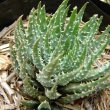

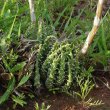
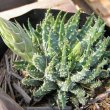
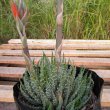
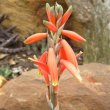
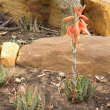
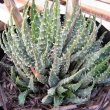


Discuss this plant
Share knowledge, ask a question or give an experience.